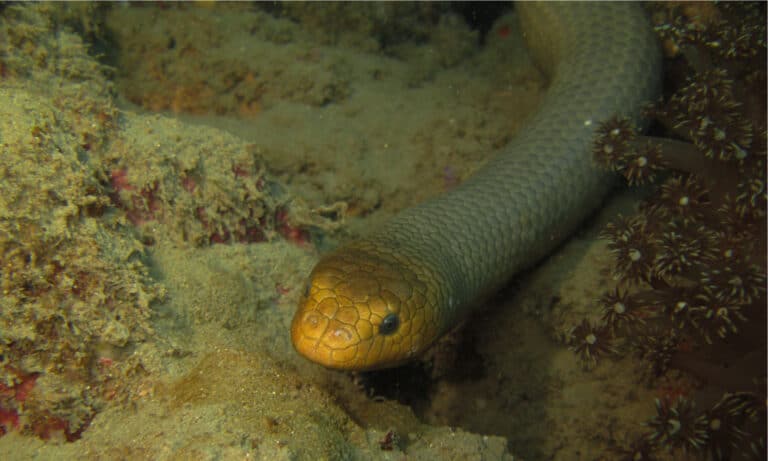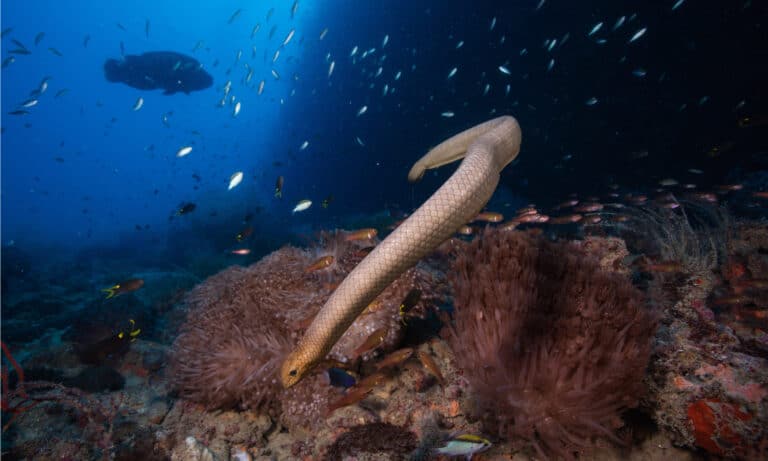Olive Sea Snake Animal Pictures
Aipysurus laevis
© DNC40/Shutterstock.com
Advertisement
The Olive sea snake has special valves in its nose to keep water out while its swimming.
The Olive sea snake has special valves in its nose to keep water out while its swimming.
The Olive sea snake uses its tail like a paddle to propel it through the water in the coral reef biome.
The Olive sea snake uses its tail like a paddle to propel it through the water in the coral reef biome.
The olive sea snake is sometimes called the golden sea snake or the olive-brown sea snake because of its coloration.
The olive sea snake is sometimes called the golden sea snake or the olive-brown sea snake because of its coloration.
Olive Sea snake, Disteira major in Bundaberg, Great Barrier Reef,Queensland. It can grow up to six feet long and weigh up to six and a half pounds.
Olive Sea snake, Disteira major in Bundaberg, Great Barrier Reef,Queensland. It can grow up to six feet long and weigh up to six and a half pounds.





